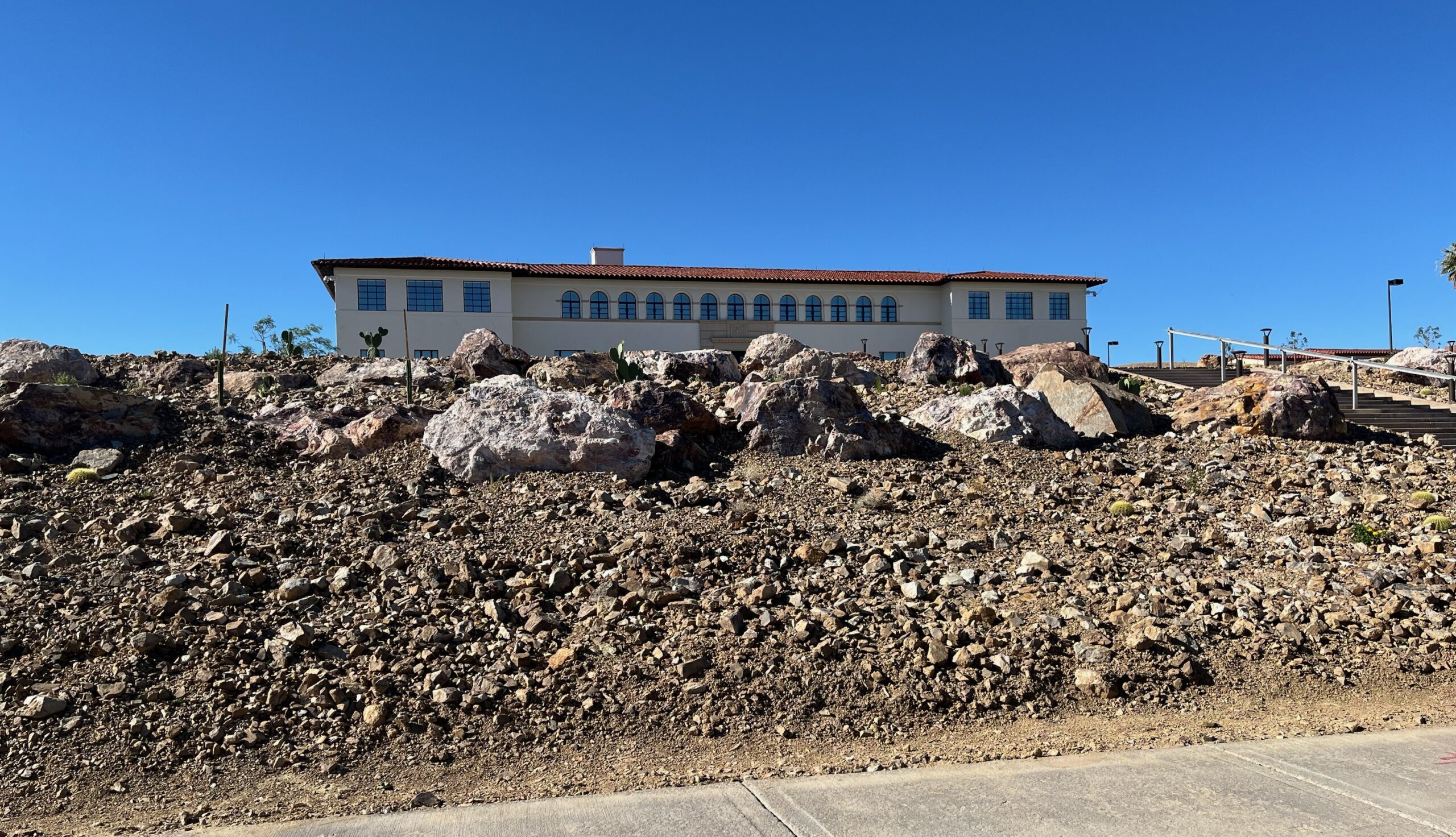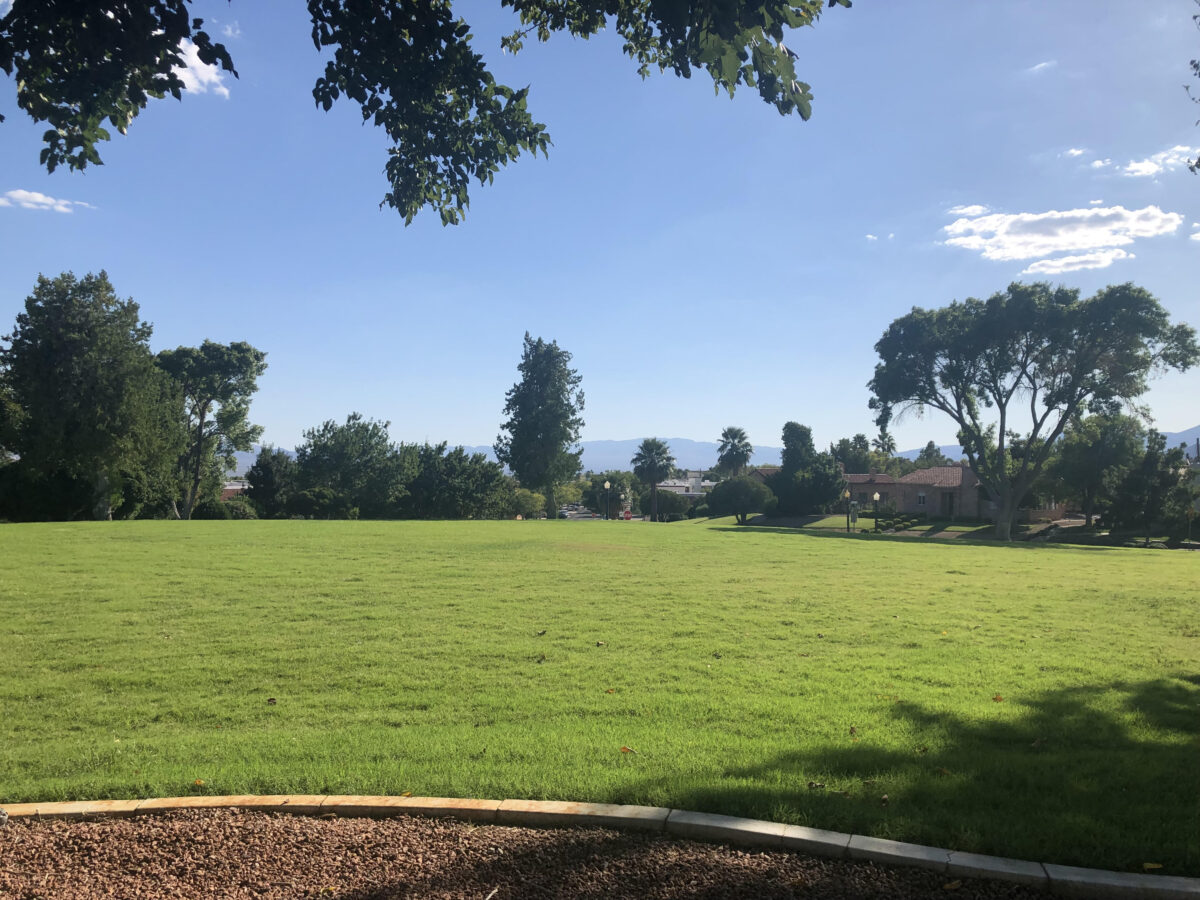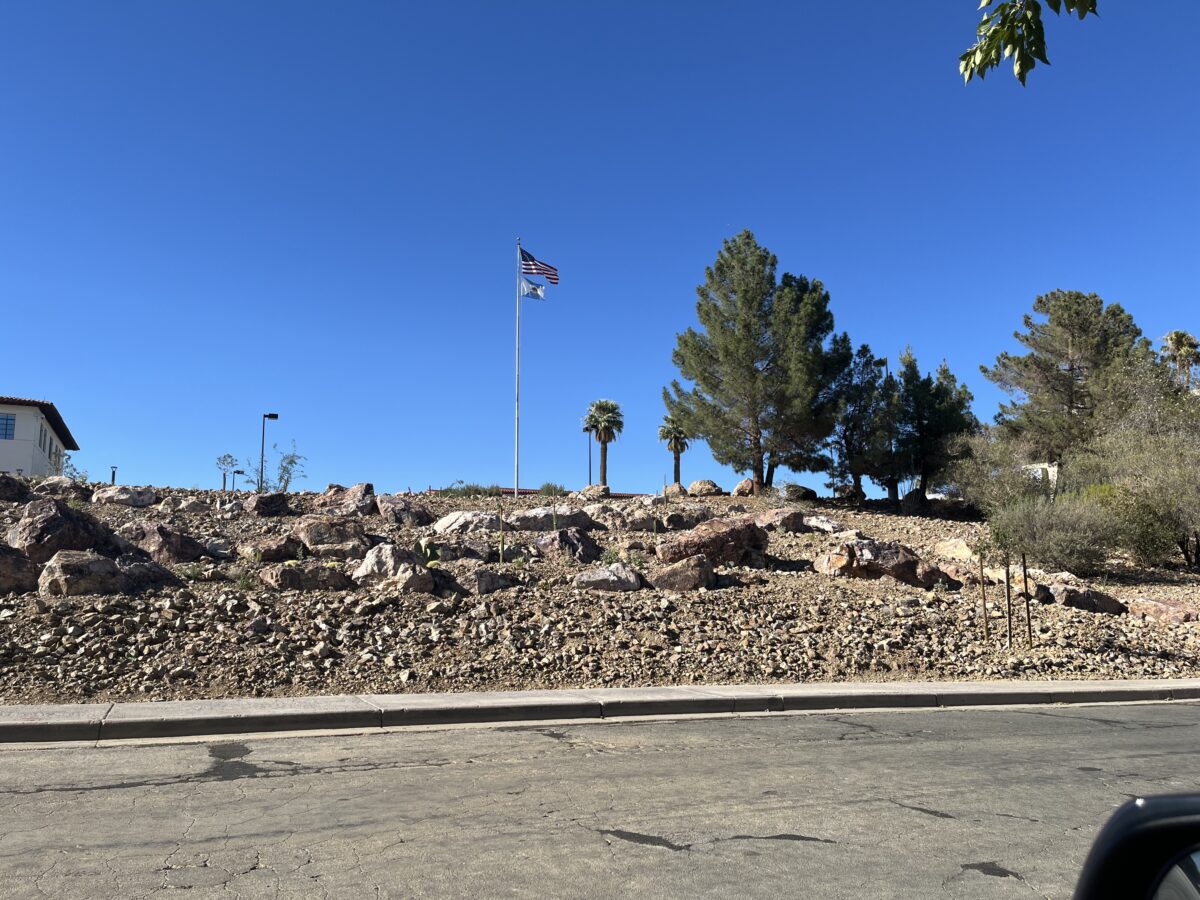OPINION: Bureau’s efforts a reminder of Boulder City’s rocky road to desert landscaping

First-time visitors quickly see why its chamber of commerce and locals alike call it “clean, green Boulder City.”
The well-planned town has long provided a verdant oasis of parks in a parched sea of sand, rock and Mojave Desert stubble. Built during the construction of Hoover Dam to house the workers, it offers a refreshing counterpoint to the frenetic pace of hell-roaring Las Vegas.
That’s only part of what makes the U.S. Bureau of Reclamation’s effort to tear out a large swath of grass and generations-old trees in the name of water conservation perplexing to some locals. It’s one thing to set an example by replacing the lawn that skirts the bureau’s headquarters with water-smart desert landscaping — it is a desert, after all — but what they’ve accomplished is more rock pile than reclamation.
And the Bureau of Reclamation didn’t just wing this. It followed the rules, notified neighbors, met with citizens and generated a weighty, 473-page plan.
“It’s awful,” says one longtime resident. “It’s really sad.”
It’s not a conspiracy theory. Someone has assassinated a grassy knoll. They brought back the desert, but appear to have forgotten the landscaping. In fairness, the rock outcropping dotted with occasional cactus bears a slight resemblance to some of the hill country outside Boulder City. It is called Boulder City for a reason.
In further defense, one city official replies, the bureau is only attempting to follow the mandates of AB356, a first-of-its-kind law passed in 2021 that prohibits watering nonfunctional grass with Colorado River water. It’s part of a mature response to long-term drought and climate change — not to mention the realities of living in the arid West. After a long tradition of practicing the illusion of endless water resources, the bureau and “the Best Town by a Dam Site” are setting a new course.


Speaking of courses, city officials stirred up the community’s duffers and hackers with its announcement in 2023 of a plan to trim 16 acres of “non-functional turf” from the Boulder City Municipal Golf Course and planting water-smart desert landscaping in its place. They’re still arguing about it in July 2024.
Setting aside the fact “non-functional turf is generally defined as any place my Titleist stops rolling, the move is becoming increasingly common in the arid West as officials face political and public pressure — as well as the reality of severe drought and climate change.
Former Boulder City Mayor Rod Woodbury apparently has time to golf and pen opinions to the Boulder City Review, where in June he wrote, in part, that although he was “all for water conservation,” the city should “get real when it comes to turf removal and be sensible about it.” It’s a case where “not in my backyard” meets “not on my back nine.”
Near completion since late May, the $4.5 million bureau project has taken months longer than anticipated to complete and will save an estimated 2 million gallons of irrigation water a year.
The savings is relative. Boulder City has enjoyed such an abundance of water that to date it hasn’t begun treating and reusing the more than 1 million gallons it lets flow into the desert each day. That’s to be in the process of changing, according to published reports.
But, in the case of the Bureau of Reclamation, did they have to make the xeriscape look so forbidding?

I can almost hear astronaut Neil Armstrong saying, “The Eagle … refuses to land here.”
The area that once provided an ideal complement to the city’s idyllic Wilbur Square Park is now rocky enough to make the hearty frontier emigrants curse “turn around the wagons.” Sure-footed burros would fake a pulled hamstring. It’s where “clean, green” meets “beyond here there be dragons.”
For occasional visitors, it’s merely a scar on the landscape. For those who remember it as a rolling green space with mature trees, it’s painful to look at. Like Pluto, but less inviting.
It offers concrete park benches, a concrete sidewalk and plenty of stone and brick work. You know, like Fred Flintstone’s place. In fairness, it’s a great place to soak up a sunstroke. Members of the geology club will rave about it.
Although no one appears anxious to admit it, the results have to be a disappointment to some officials. But they might have seen this coming: On the day that marked the project’s groundbreaking, a piece of heavy equipment had difficulty actually breaking the ground.
Noting the mandates of AB356, Boulder City’s official response struck a positive note while acknowledging, “The City has heard from several Boulder City residents, and we can understand their concerns. … We are hopeful that the project, at completion and maturity, will strike a balance between the Bureau of Reclamation’s conservation strategies and preserving the charm and character of our unique and historic community.”
In its statement, the Bureau of Reclamation said its “water-saving xeriscaping project is now open to the public” and features “approximately 85% coverage of young native desert plants.” Although not easy to see, once they mature the project “will more closely resemble the intent of the original design and maintain visual continuity with other landscapes in Boulder City.”
More than a year ago, bureau Deputy Regional Director Stacey Wade enthused that upon completion it would be recognized for its beauty. Boulder City Mayor Joe Hardy, eternal optimist he, called it nothing less than “a hill of hope” that pointed toward a water-smart future for his town.
Hill of hope? Just don’t break down there, mayor.
I hear that beyond there is where the dragons be.
John L. Smith is an author and longtime columnist. He was born in Henderson and his family’s Nevada roots go back to 1881. His stories have appeared in Time, Readers Digest, The Daily Beast, Reuters, Ruralite and Desert Companion, among others. He also offers weekly commentary on Nevada Public Radio station KNPR.
